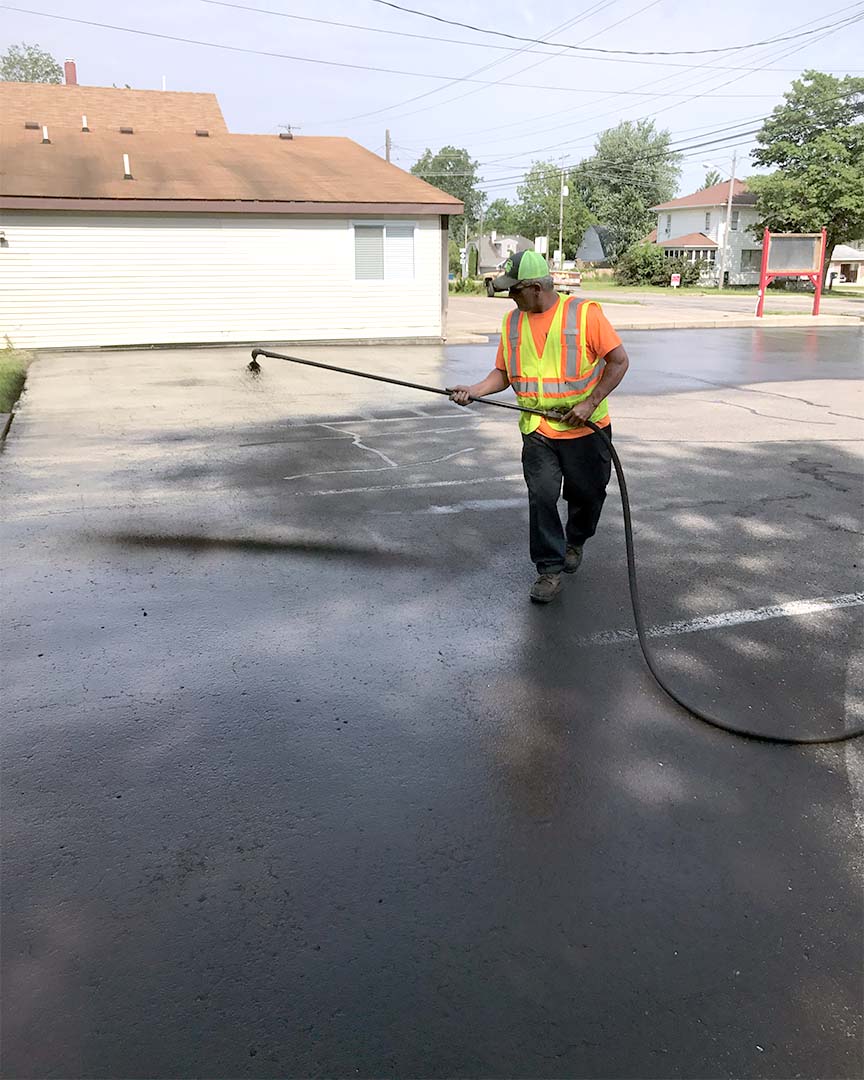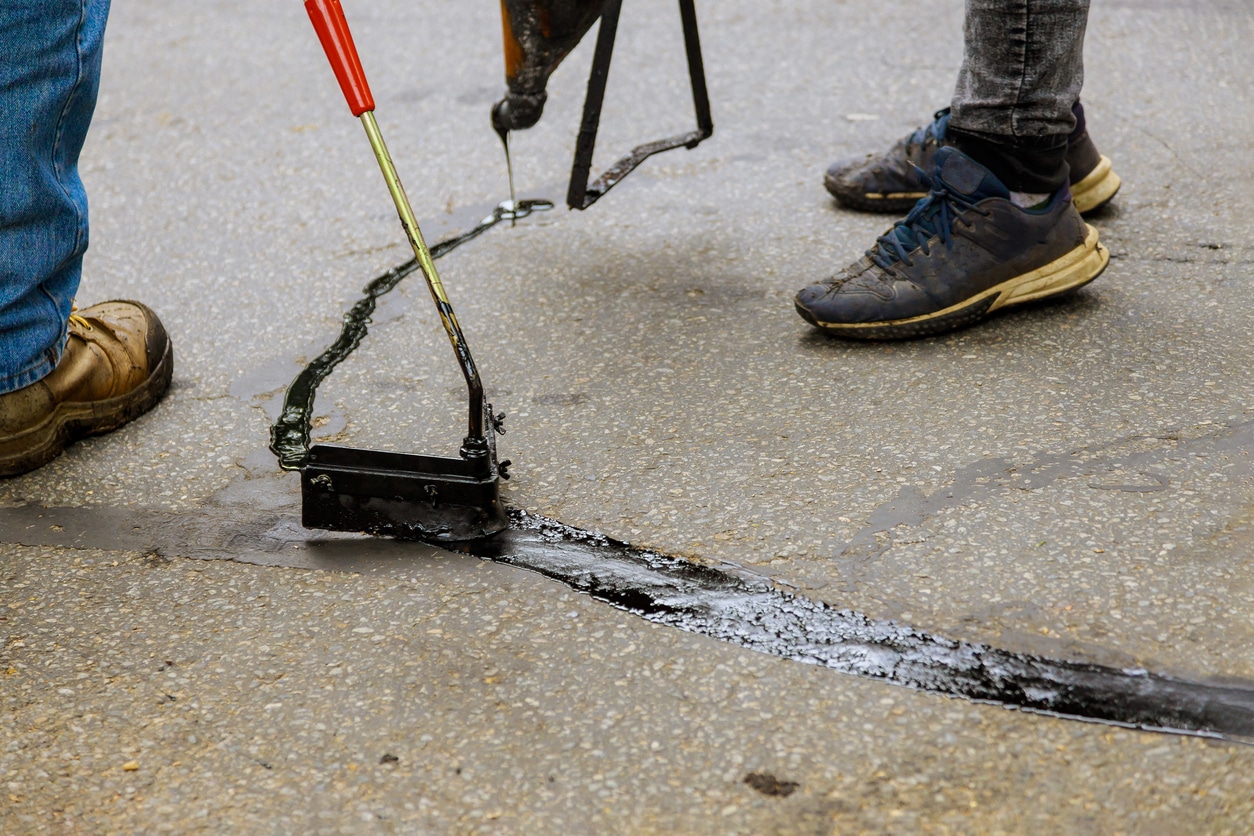Unlock the Tricks of Asphalt Sealing: Taking Full Advantage Of Warm Mix Asphalt Durability
Unlock the Tricks of Asphalt Sealing: Taking Full Advantage Of Warm Mix Asphalt Durability
Blog Article
Hot Mix Asphalt: A Sustainable Solution for Sidewalk
Hot Mix Asphalt (HMA) has become a leading lasting option for sidewalk services, offering a myriad of ingenious innovations and ecological benefits. Its capability to lower and recycle products energy intake provides an engaging instance for its fostering in road building jobs. The long-lasting performance and resilience of HMA make it a preferred alternative for infrastructure advancement. As the need for environmentally friendly construction practices expands, discovering the subtleties of HMA's sustainability can provide important understandings right into the future of pavement services.
Ecological Advantages of Hot Mix Asphalt

In Addition, Warm Mix Asphalt helps to minimize metropolitan warmth island results. Its dark shade absorbs sunshine, minimizing the quantity of heat showed back right into the environment compared to lighter-colored pavements. This can reduce ambient temperatures in city locations, lowering the need for air conditioning and inevitably lowering energy intake.
In enhancement, Warm Mix Asphalt contributes to improved stormwater monitoring. Its permeable nature enables water to infiltrate the pavement and reenergize groundwater materials, lowering overflow and the risk of flooding. These environmental advantages make Warm Mix Asphalt a lasting choice for paving freeways and roads.
Power Efficiency in HMA Production
Is power effectiveness an important element in the production of Warm Mix Asphalt (HMA)? Absolutely. Power plays a considerable function in the production of HMA, affecting both expense and ecological sustainability. One essential element of energy efficiency in HMA manufacturing is making use of warm mix asphalt (WMA) modern technologies (regrading). WMA permits the blending and placement of asphalt at lower temperatures contrasted to traditional warm mix asphalt, resulting in reduced power usage during production. This procedure not just decreases fuel use but additionally reduces greenhouse gas emissions, making it a more environmentally pleasant alternative.
Moreover, developments in plant innovations have led to more energy-efficient HMA manufacturing processes. By optimizing power usage in HMA manufacturing, the industry can reduce its carbon footprint while keeping premium pavement materials.
Recyclability of Warm Mix Asphalt
The recyclability of Hot Mix Asphalt (HMA) is a critical facet of its sustainability and lasting ecological impact. HMA is among the most recycled products in the USA, with over 100 million loads of recovered asphalt pavement (RAP) being recycled every year in new sidewalk building and construction. Recycling HMA provides a number of ecological advantages, such as reducing the requirement for virgin materials, reducing energy consumption during manufacturing, and decreasing the quantity of waste sent out to land fills.
The process of recycling HMA entails grating the existing pavement, squashing it right into smaller pieces, and blending it with new accumulation and asphalt binder to produce a recycled mix. Overall, the recyclability of HMA plays a considerable role in promoting sustainable techniques within the sidewalk industry.

Long-Term Performance of HMA
Asphalt pavements show toughness and strength over a prolonged period, mirroring the lasting performance of Hot Mix Asphalt (HMA) The longevity of HMA can be credited to its capacity to hold up against heavy web traffic tons, severe weather, and the impacts of aging. Research studies have revealed that properly designed and appropriately created HMA sidewalks can last for 20 years or even more with routine upkeep. The key to taking full advantage of the lasting performance of HMA depends on utilizing premium materials, adhering to best practices in building and construction, and implementing effective upkeep approaches. Proper drain, routine assessments, and prompt fixings are vital for protecting the structural honesty of HMA sidewalks gradually. Additionally, improvements in HMA technology, such as the use of polymer-modified binders and cozy mix asphalt, have additionally enhanced the longevity and long life of HMA sidewalks. By focusing on top quality building and maintenance techniques, HMA remains to verify itself as a lasting and cost-effective solution for long-lasting pavement infrastructure.

HMA: Resilience and Sustainability
Demonstrating both resilience and sustainability, Warm Mix Asphalt (HMA) has actually come to be a keystone in the building and construction of long-lasting sidewalk frameworks - regrading. HMA's longevity stems from its ability to withstand heavy tons, harsh weather problems, and high website traffic quantities, making it a reputable option for highways, freeways, and airport runways. The structure of HMA, which usually includes aggregates, binder, more and filler, plays an important role in improving its durability and resistance to tear and use
Additionally, HMA's sustainability depends on its recyclability and energy-efficient useful link production procedure. The capability to reuse recovered asphalt pavement (RAP) in brand-new HMA blends decreases the need for virgin materials and reduces the environmental impact of sidewalk construction and maintenance. In addition, the energy effectiveness of generating HMA hinges on its lower mixing temperatures compared to various other sidewalk products, leading to decreased power intake and greenhouse gas emissions.
Conclusion
In conclusion, hot mix asphalt (HMA) supplies a sustainable option for sidewalk with its eco friendly features. HMA's recyclability, power performance in manufacturing, and long-term resilience make it an environment-friendly selection for roadway construction. By preserving natural deposits, decreasing waste, and lowering greenhouse gas exhausts, HMA plays a crucial duty in advertising sustainability in facilities growth. Its ability to mitigate urban heat island effects further highlights its significance in developing ecologically mindful and resistant pavement systems.
HMA is one of the most recycled products in the United States, with over 100 million bunches of redeemed asphalt sidewalk (RAP) being reused annually in brand-new sidewalk building and construction.The procedure of reusing HMA involves view publisher site crushing the existing pavement, squashing it into smaller items, and mixing it with brand-new aggregate and asphalt binder to create a recycled mix.Asphalt pavements demonstrate resilience and resilience over an extended duration, showing the lasting performance of Warm Mix Asphalt (HMA) Additionally, developments in HMA modern technology, such as the use of polymer-modified binders and warm mix asphalt, have better boosted the sturdiness and long life of HMA pavements. The capacity to recycle redeemed asphalt sidewalk (RAP) in new HMA mixes reduces the need for virgin products and minimizes the ecological effect of sidewalk building and construction and maintenance.
Report this page